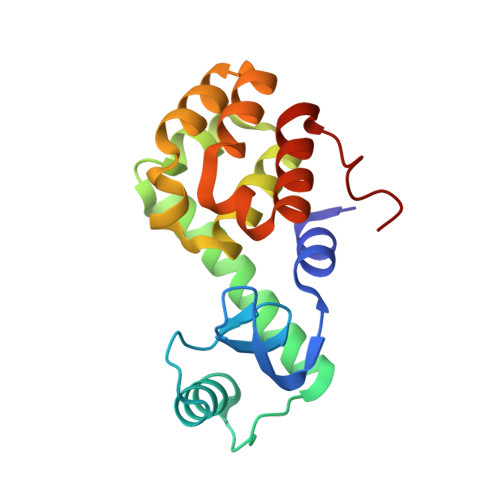Structural determinants of nitroxide motion in spin-labeled proteins: Tertiary contact and solvent-inaccessible sites in helix G of T4 lysozyme.
Guo, Z., Cascio, D., Hideg, K., Kalai, T., Hubbell, W.L.(2007) Protein Sci 16: 1069-1086
- PubMed: 17473014
- DOI: https://doi.org/10.1110/ps.062739107
- Primary Citation of Related Structures:
2IGC, 2NTG, 2NTH, 2OU8, 2OU9 - PubMed Abstract:
A nitroxide side chain (R1) has been substituted at single sites along a helix-turn-helix motif in T4 lysozyme (residues 114-135). Together with previously published data, the new sites reported complete a continuous scan through the motif. Mutants with R1 at sites 115 and 118 were selected for crystallographic analysis to identify the structural origins of the corresponding two-component EPR spectra. At 115, R1 is shown to occupy two rotamers in the room temperature crystal structure, one of which has not been previously reported. The two components in the EPR spectrum apparently arise from differential interactions of the two rotamers with the surrounding structure, the most important of which is a hydrophobic interaction of the nitroxide ring. Interestingly, the crystal structure at 100 K reveals a single rotamer, emphasizing the possibility of rotamer selection in low-temperature crystal structures. Residue 118 is at a solvent-inaccessible site in the protein core, and the structure of 118R1, the first reported for the R1 side chain at a buried site, reveals how the side chain is accommodated in an overpacked core.
Organizational Affiliation:
Jules Stein Eye Institute and Department of Chemistry and Biochemistry, University of California, Los Angeles, California 90095-7008, USA.















